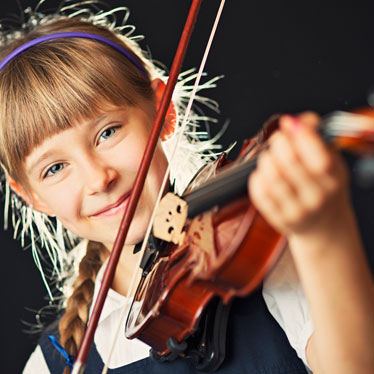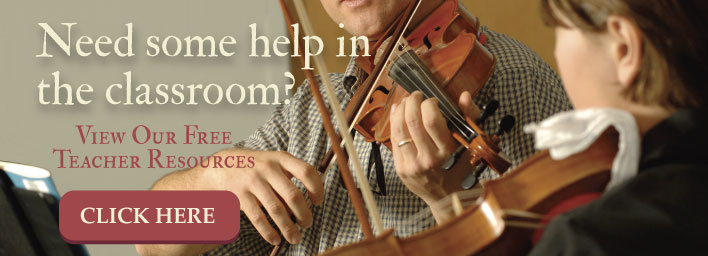Fun Games To Teach Tough Violin Drills

As a violin teacher, you know that when students first begin instruction, it’s imperative to teach proper form. For new students to be able to progress, holding the instrument and bow properly and using correct posture are extremely important, but teaching the correct mechanics involved in playing is just as crucial. And, about the only way for any student to become proficient in these areas is to practice drills.
However, the nature of a drill is repetition; and after a while, that kind of repetitious redundancy can wear on the nerves. Drills are boring and many of them are very hard for beginners. Their bodies simply aren’t used to performing those motions. Indeed, the only way to develop such muscle memory is by practicing the drills that seem so dreadful.These ideas can help you infuse a level of fun into drill practice. Granted, your students will still need to practice tough violin drills, but this way, at least you’ll be able to help them keep it interesting.
Rewards, Recognition, and Bragging Rights
One of the best ways to make violin drills fun involves creating a challenge and reward system. For exercises and drills, you can pair students according to ability and allow them to compete. The student who isn’t performing the drill is responsible for watching to ensure that the proper form is maintained. By including small weekly prizes, or another form of “extra credit,” you can make drill practice one of the highlights of class.
Bowing Exercises
Learning to wield the bow correctly is one of the most difficult challenges new students face. Bow exercises help develop the muscles in the fingers and hand and help beginning violinists become accustomed to the weight and balance needed for playing. Begin by having students warm up their fingers, wrists, elbow, and shoulders. Some fun techniques include:
- With arm extended perpendicular to your body, straight out in front, wave “bye-bye” using only the wrist. In the same position, pretend that your hand is a person’s head, and carefully “look both ways” before crossing the street. These exercised promote wrist strength and flexibility.
- Pinky push-ups are also beneficial. Have students (with the proper bow hold) raise and lower their pinky. You can either add background music or have the students count out loud.
- Another great tool for helping beginners learn to keep their pinky placed correctly on the bow involves buying some corn pad cushions. They look like little doughnuts and are self-adhesive. Have the student hold the bow in the proper position and place one of these “pinky pillows” on the (top of the) stick where the pinky should be placed. It helps students remember to keep their pinky in position, rather than holding it up.
- The “spider crawl” helps improve finger dexterity. Have your students hold the bow and use their fingers to slowly inch along to the tip and back. The important idea here is to ensure that students don’t change the position of the fingers, just their location on the bow. You can make it a contest. Pair the students. While one student does the exercise, the other student can time it and watch that the fingers don’t change position. The player who does it faster can earn a small prize. Even if you just list leaders each week, rewards will help keep tedium at bay.
Sight Reading
Being able to sight read music is very important for new beginners to learn. You can make it easier for young children to learn to read music by sight by playing a game that involves physical movement. Young children have lots of energy and this game is designed to use that energy in a positive way.
- Designate four areas in the room, like corners or large mats positioned on the floor, as a specific note, signature, or notation. Then by using flash cards or verbal definitions, see how quickly students can move to the proper position. Of course, you’ll need to limit participants each round. You don’t want collisions to be the most memorable part of the drill. Older students use more difficult cards and race around depositing them in the proper location.
- Or, you can have children clap and speak. While looking at some piece of music, have the students vocalize the notes and clap the rhythm. Reading music out-loud in this way helps reinforce sight recognition, plus, students get to be noisy, which is always fun.
Teaching the proper playing holds and learning the most difficult concepts of music can be a struggle for beginners. But, by adding some fun exercised into the mix, you can make this tedious part of learning a bit easier to get through.


